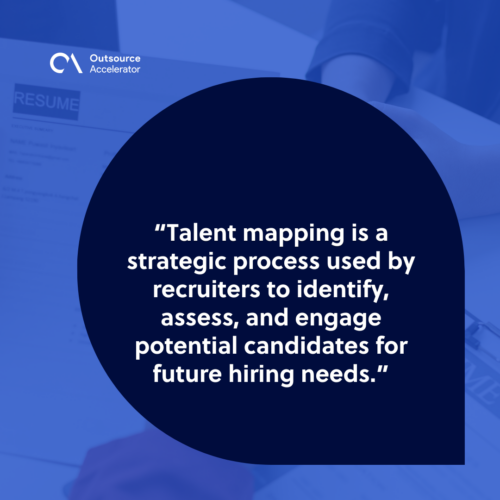Simplified talent mapping: A quick guide for recruiters

The success of any organization hinges on its ability to attract, hire, and retain top talent.
However, with fast-changing industry standards, recruiters must quickly fill positions while ensuring that new hires fit the company’s goals and culture.
This is where talent mapping comes into play. By creating a comprehensive map of the talent landscape, organizations can anticipate hiring needs, understand market trends, and build a robust pipeline of qualified candidates.
In this article, we will delve into the concept of talent mapping and its significance for recruiters. We’ll also explore the steps involved in creating an effective talent map and discuss how Digital Consulting can assist firms in hiring the right talents they need.
What is talent mapping?
Talent mapping is a strategic process used by recruiters to identify, assess, and engage potential candidates for future hiring needs. It involves creating a comprehensive overview of the talent landscape, including:
- Current employees
- Potential external candidates
- Market trends
This proactive approach helps organizations prepare for upcoming vacancies and strategic growth initiatives.
Talent mapping is essential for recruitment strategies because it allows organizations to stay ahead of their hiring needs.
Instead of reacting to vacancies as they arise, companies can proactively maintain a pipeline of qualified talents. This leads to a more efficient and effective recruitment process.
6 Important steps in talent mapping
Talent mapping is a systematic approach to identifying and engaging potential candidates for future roles.
By following these steps, recruiters can create a rich candidate pool and ensure they are prepared to meet their organization’s staffing needs.
Step #1: Identify business needs
Analyze your organization’s current and future goals to determine the skills and roles required. Understanding these needs helps you focus your talent mapping efforts on the most critical areas.
Step #2: Conduct market research
Gather data on industry trends, talent availability, and competitor hiring practices. Conducting market research helps you understand the talent landscape and identify where to find the best candidates.
Step #3: Create talent profiles
Define the key attributes, skills, and experience needed for each role. Develop detailed job descriptions and candidate personas to guide your search and ensure you target the right candidates.
Step #4: Build a talent pool
Use various channels to source candidates, including social media, professional networks, and talent databases. Building a diverse pool of potential candidates ensures you have options when a position opens.
Step #5: Assess and segment candidates
Implement assessment tools to evaluate candidates’ skills and experience. Segment candidates into categories based on their fit for different roles, making it easier to identify the best matches when needed.
Step #6: Engage and nurture relationships
Develop strategies for maintaining communication with potential candidates. Use CRM systems to track interactions and build relationships, keeping candidates interested in your organization.
By following these steps, recruiters can effectively map talent and stay ahead in the competitive job market, ensuring their organizations have the right people for the right roles.
Simplify your talent mapping with Digital Consulting
Talent mapping doesn’t have to be a daunting task. With Digital Consulting, you can streamline the process and ensure you’re always ready with the right talent.
Digital Consulting specializes in talent mapping and market intelligence, providing insights and strategies that help businesses efficiently identify and engage top candidates.
Its expertise in leveraging digital technologies and operational capabilities ensures that you stay ahead in the competitive job market.
Contact Digital Consulting today and let them help you find the perfect fit for your team!









 Independent
Independent




